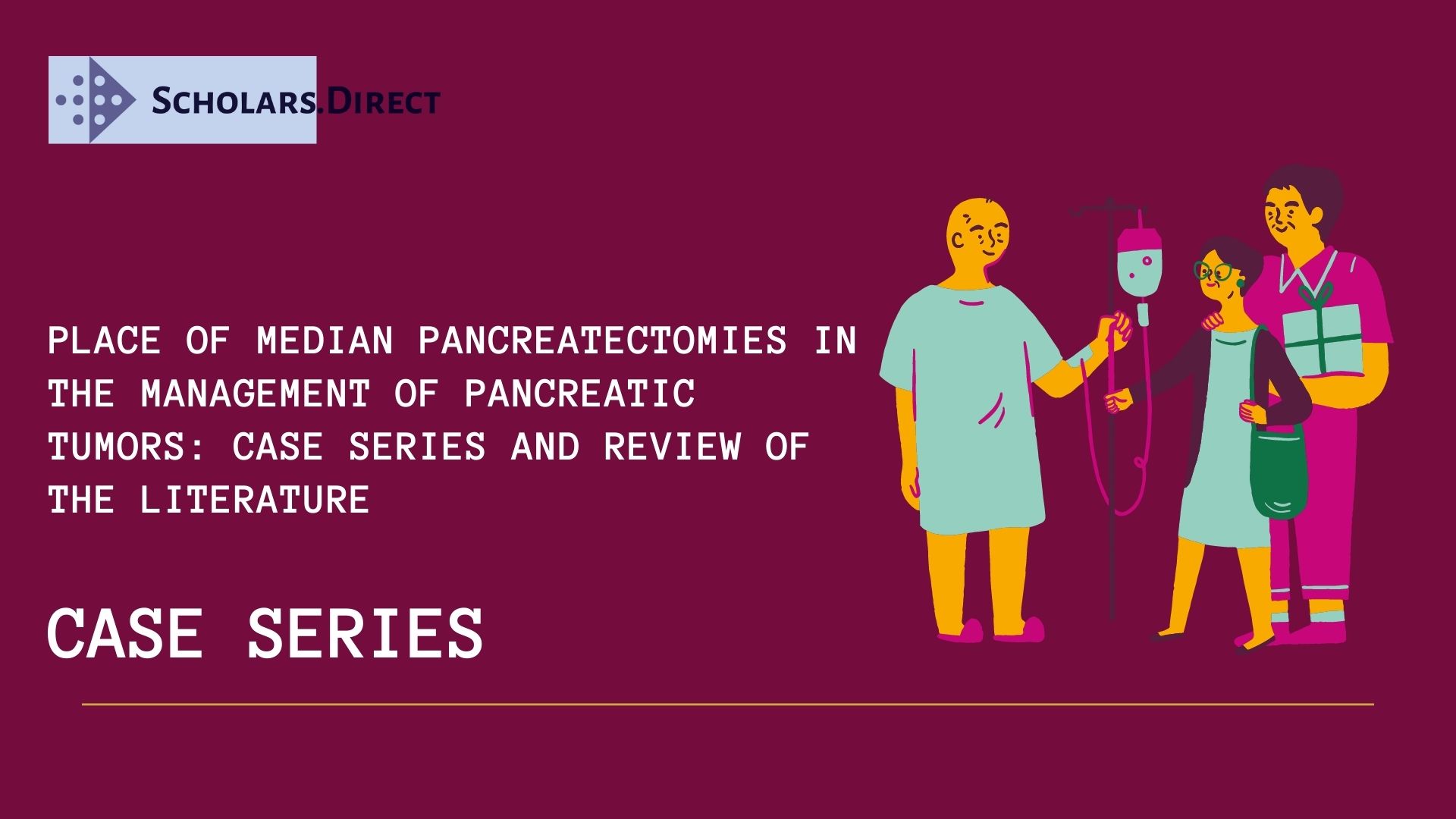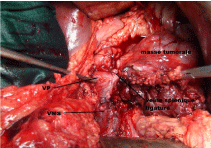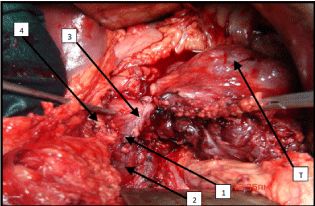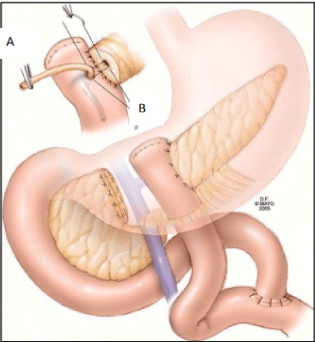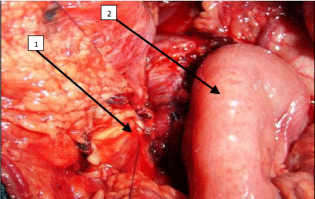Place of Median Pancreatectomies in the Management of Pancreatic Tumors: Case Series and Review of the Literature
Introduction
The management of tumors of the isthmus and the body of the pancreas is still a subject of debate between the various experts who must choose between a wide resection (exposing the patient to a risk of pancreatic insufficiency) and a minimalist treatment which might be insufficient. The Median Pancreatectomy is then an elegant solution to deal with it. We report the experience of our department to assess the effectiveness and feasibility of this technique.
Keywords
Median pancreatectomy, Pancreatic insufficiency, Pancreatic fistula
Materials and Methods
Observation 1
38-year-old patient who complained of epigastric pain for over 1-year. The radiological assessment objectified a 4 cm lesion in the pancreatic body adhering to the splenic vein. A biopsy done under ultrasound endoscopy revealed a neuroendocrine tumor whose non-secreting nature was confirmed by biological examination. The patient underwent a median pancreatectomy with ligation of the splenic vessels and realization of a pancreato-jejunal anastomosis on a Y-shaped loop. The early operative outcomes were simple whereas the long-term evolution was marked by the discovery of hepatic metastases and a portal cavernoma (Figure 1).
Observation 2
42-year-old woman with abdominal pain associated with vomiting. Ultrasound and CT scan revealed a multi-partitioned cystic tumor of the body of the pancreas (42 × 28 mm). Biological explorations have shown hyper amylasemia and hyper lipasemia. The patient underwent a midline pancreatectomy with preservation of the splenic vessels and a pancreatic-jejunal anastomosis on the Y-shaped loop. The pathological study of the part returned in favor of a serous cystadenoma. The postoperative period was marked by the occurrence of a grade A pancreatic fistula according to the ISGPF classification (International Study Group on Pancreatic Fistula), which progressed well after 5 days of treatment with octreotide (Figure 2).
Observation 3
57-year-old patient suffering from epigastralgia and weight loss. Radiological investigation revealed a cystic mass in the body of the pancreas. The patient underwent a midline pancreatectomy with conservation of the splenic vessels and a pancreatic-jejunal anastomosis on the Y-shaped loop. The short and long-term post-operative consequences were simple (Figure 3).
The anatomopathological study of the tumor returned show a mucinous cystadenoma.
Observation 4
57-year-old man, who complains of transfixing epigastric pain developing in a context of weight loss. A pancreatic MRI objectified a body mass of the pancreas. A median pancreatectomy was performed in this patient with simple suites and the anatomopathological study of the tumor returned in favor of a neuroma (Figure 4).
Surgical Technique
The first approach is a right subcostal incision. The mobilized tumor segment is separated from the common hepatic artery and the splenic vein (it was necessary to ligate the latter in the first patient) and then sectioned with a cold blade. The two ends of the pancreas are anastomosed to a digestive loop mounted in Y using 5/0 prolene.
A drain is left in contact with the anastomosis and the abdominal wall is closed plane by plane.
Results
Over a period of 7-years, 04 median pancreatectomies were performed in our department in 03 women and 01 man whose age varied between 38-years and 57-years.
The indications were a neuroendocrine tumor, a serous cystadenoma, a mucinous cystadenoma and a neurinoma.
The average duration of the intervention was 120 min (95-200 min) with an average blood loss of 400 ml.
No deaths occurred in the immediate aftermath.
References
- M Santangelo, Anna Esposito, Vincenzo Tammaro, et al. (2015) What indication, morbidity and mortality for central pancreatectomy in oncological surgery? A systematic review. Int J Surg 172-176
- Masayuki Sho, Takahiro Akahori, Minako Nagai, et al. (2015) Central pancreatectomy with double pancreaticojejunostomy. J Am Coll Surg 221: e15-e19
- Masayuki Ishii, Yasutoshi Kimura, Masafumi Imamura, et al. (2015) Remnant pancreas reconstruction with duct to duct anastomosis after a middle pancreatectomy: A report of two cases. Hepatogastroenterology 62: 190-194.
- Sugito K, Furuya T, Kaneda H, et al. (2012) Long-term follow-up of nutritional status, pancreatic function, and morphological changes of the pancreatic remnant after pancreatic tumor resection in children. Pancreas 41: 554-559.
- Yuasa Y, Murakami Y, Nakamura H, et al. (2012) Histological loss of pancreatic exocrine cells correlates with pancreatic exocrine function after pancreatic surgery. Pancreas 41: 928-933.
Corresponding Author
Mohammed El Fahssi, Department of Digestive Surgery, Mohammed V military hospital of Rabat, Morocco.
Copyright
© 2021 Fahssi M. This is an open-access article distributed under the terms of the Creative Commons Attribution License, which permits unrestricted use, distribution, and reproduction in any medium, provided the original author and source are credited.
